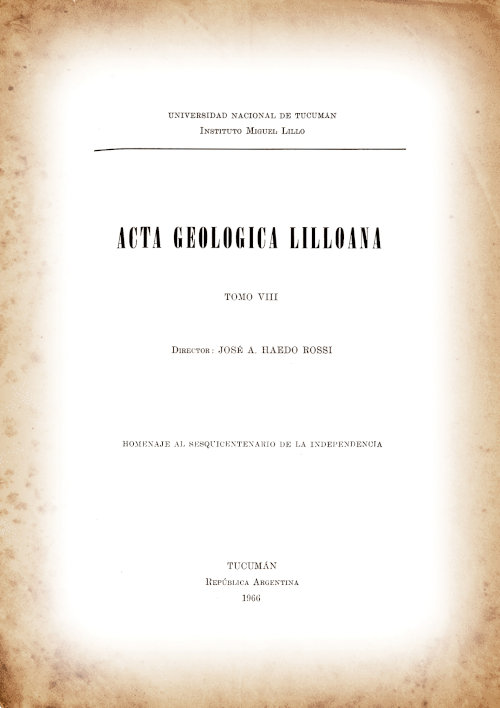On the Cerebral and Nasal Cavities and Other Structures of the Cranium of Exaeretodon sp. (Cynodontia, Traversodontidae
Keywords:
Traversodontidae, Cynodontia, Exaeretodon, paleontology, morphology, cranial osteologyAbstract
New material collected and recently prepared for study, from the Ischigualasto bed has allowed us to describe the cranial and the nasal cavities, and to consider some characters of the stapes and the stapedial process of the quadrate. A somewhat detailed description of the exoceipital, basioccipital, paraesphenoid, basiesphenoid, prootic and opistotic is given in this paper. A particular structure formed by basiesphenoid and aliesphenoid, in apparent contact by connective tissue, is considered. In this way, the posterior part of the telencephalon would be separated from the common opening for the nerves III, IV, V., VI.
The stapes are described and figured: they bear two shafts, dorsal] and ventral, separated at the distal end, and in contact with the stapedial process of the quadrate.
The characters of the fossa subarquata in the cranial cavity are described. The semicircular canals and the vestibular region are more ossified than in Diademodon. The main features of the jugular canals and some aspects of the morphology of an endocraneal natural east are given.
The nasal cavity is described in some detail, based on various natural casts, and it is pointed out that the level of its organization is more or less the same in Exaeretodon as in Diademodon or Oligokyphus.
It is considered that Exaeretodon may have had a similar ecological role in the Isehigualasto fauna as Diademodon did in the Cynognathus-Zone fauna. An interpretation is given for the paralelism observed between Exaeretodon and Diademodon in many osteological characters of the skull.
The more advanced cranial characters of Exaeretodon in comparisson with Diademodon are listed, and in a similar way, a list is given of Oligokyphus compared with Exaeretodon. Thus, it is concluded that the differences between Exaeretodon and Oligophyphus are evidently of a higher degree than those between Exaeretodon and Diademodon.
Some considerations on the middle ear and the prootic of Exacretodon are given.






